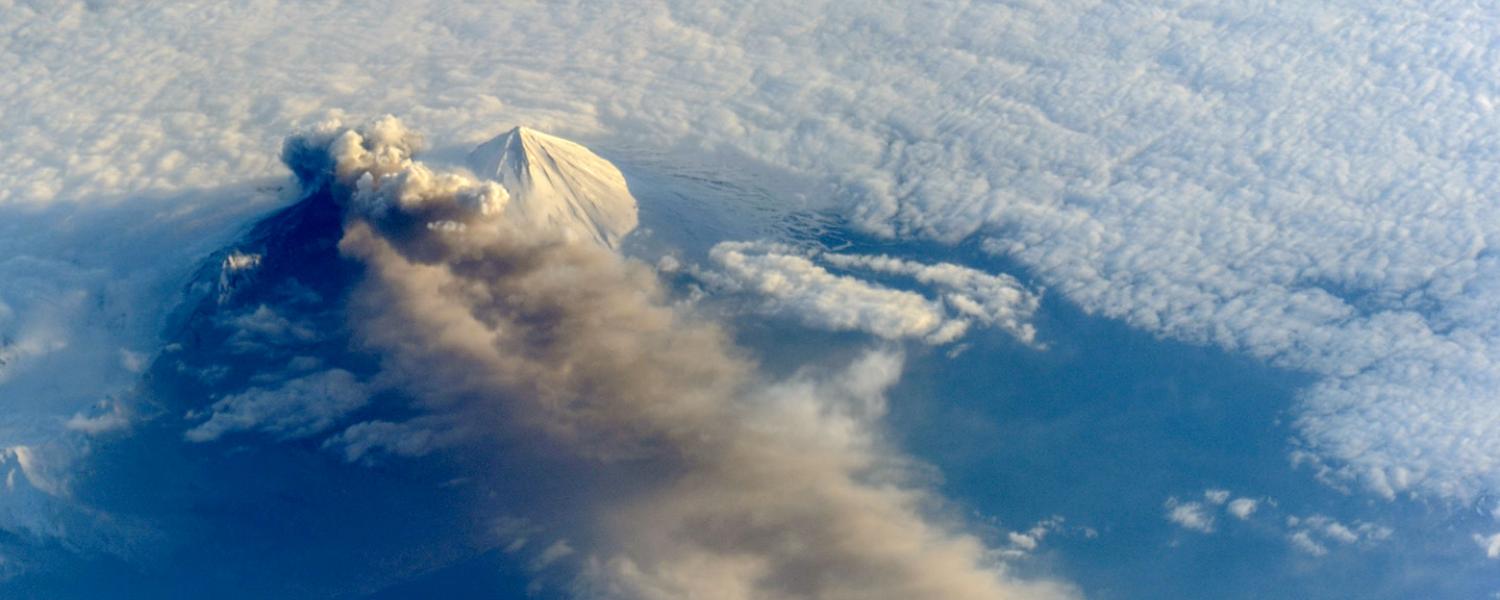When volcanos erupt, these geologic monsters produce tremendous clouds of volcanic ash and dust — plumes that can blacken the sky, shut down air traffic, and reach heights of roughly 25 miles above Earth’s surface. A new study led suggests that such volcanic ash may also have a larger influence on the planet’s climate than scientists previously suspected.
The new research, published in the journal Nature Communications, examines the eruption of Mount Kelut (or Kelud) on the Indonesian island of Java in 2014. Drawing on real-world observations of this event and advanced computer simulations, the team discovered that volcanic ash seems to be prone to loitering — remaining in the air for months or even longer — after a major eruption. Yunqian Zhu, the lead author of the new study and a research scientist at the Laboratory for Atmospheric and Space Physics (LASP) at CU Boulder, said:
“What we found for this eruption is that the volcanic ash can persist for a long time.”
Lingering volcanic ash
The discovery began with a chance observation: Members of the research team had been flying an unmanned aircraft near the site of the Mount Kelut eruption — an event that covered large portions of Java in volcanic ash and drove people from their homes. In the process, the aircraft spotted something that shouldn’t have been there. Zhu said:
“They saw some large particles floating around in the atmosphere a month after the eruption. It looked like ash.”

She explained that scientists have long known that volcanic eruptions can take a toll on the planet’s climate. These events blast huge amounts of sulfur-rich particles high into Earth’s atmosphere where they can block sunlight from reaching the ground. Researchers didn’t think, however, that volcanic ash could play much of a role in that cooling effect. These chunks of rocky debris, scientists reasoned, are so heavy that most of them likely fall out of volcanic clouds not long after an eruption.
Zhu’s team wanted to find out why that wasn’t the case with Kelut. Drawing on aircraft and satellite observations of the unfolding disaster, the group discovered that the volcano’s plume seemed to be rife with small and lightweight bits of volcanic ash — tiny particles that were likely capable of floating in the air for long periods of time, much like dandelion fluff. Zhu said:
“Researchers have assumed that ash is similar to volcanic glass. But what we’ve found is that these floating ones have a density that’s more like pumice.”
Disappearing molecules
Study co-author Brian Toon added that these pumice-like particles also seem to shift the chemistry of the entire volcanic plume. Toon, a professor in LASP and the Department of Atmospheric and Oceanic Sciences at CU Boulder, explained that erupting volcanos spew out a large amount of sulfur dioxide. Many researchers previously assumed that those molecules interact with others in the air and convert into sulfuric acid — a series of chemical reactions that, theoretically, could take weeks to complete. Observations of real-life eruptions, however, suggest that it happens a lot faster than that. Toon said:
“There has been a puzzle of why these reactions occur so fast.”
He and his colleagues think they’ve discovered the answer: Those molecules of sulfur dioxide seem to stick to the particles of volcanic ash floating in the air. In the process, they may undergo chemical reactions on the surface of the volcanic ash itself — possibly pulling around 43 percent more sulfur dioxide out of the air. Volcanic ash, in other words, may hasten the transformation of volcanic gases in the atmosphere. Just what the impact of those clouds of ash is on the climate isn’t clear.
Long-lasting particles in the atmosphere could, theoretically, darken and even help to cool the planet after an eruption. Floating volcanic ash might also blow all the way from sites like Kelut to the planet’s poles. There, it could kick-start chemical reactions that would damage Earth’s all-important ozone layer. But the researchers say that one thing is clear: When a volcano blows, it may be time to pay a lot more attention to all that volcanic ash and its true impact on Earth’s climate. Toon said:
“I think we’ve discovered something important here. It’s subtle, but it could make a big difference.”
Provided by: University of Colorado at Boulder [Note: Materials may be edited for content and length.]
Follow us on Twitter, Facebook, or Pinterest







